Dear Santa, please may I have a man shed for Christmas? And please, Santa, can it have wheels, so that I can head off, whenever I want and to wherever I want, and have lot and lots and lots of adventures? Pleeeze?
My first consciousness of camper vans was in the early 1970s, when I had a summer job in London. I remember going to a road near County Hall in Lambeth, on the south bank of the Thames, home then to the now defunct Greater London Council, the body that ran the city. And on this road there came every weekend a dozen or so Antipodean travellers – fresh from trekking through southeast Asia, India and the Middle East, then through Greece and Yugoslavia and on across Europe to Britain, all in Volkswagen camper vans.
Many got jobs in London bars and restaurants and installed themselves in flats around Earls Court, so many in fact that the area became known as Kangaroo Valley. And to the highest bidder at the back of County Hall, they sold their well-travelled VW camper vans, with their sliding side doors, rudimentary cooking and sleeping facilities... and the potential of limitless horizons to explore.
I never did get my camper van, but nor has the lure has ever gone away. To judge by Emma Reddington’s elegantly produced book Nomad (brought to life vividly by Sian Richards’s beautifully composed photographs), quite a few thirtysomethings feel the same way today – and have done something about it.
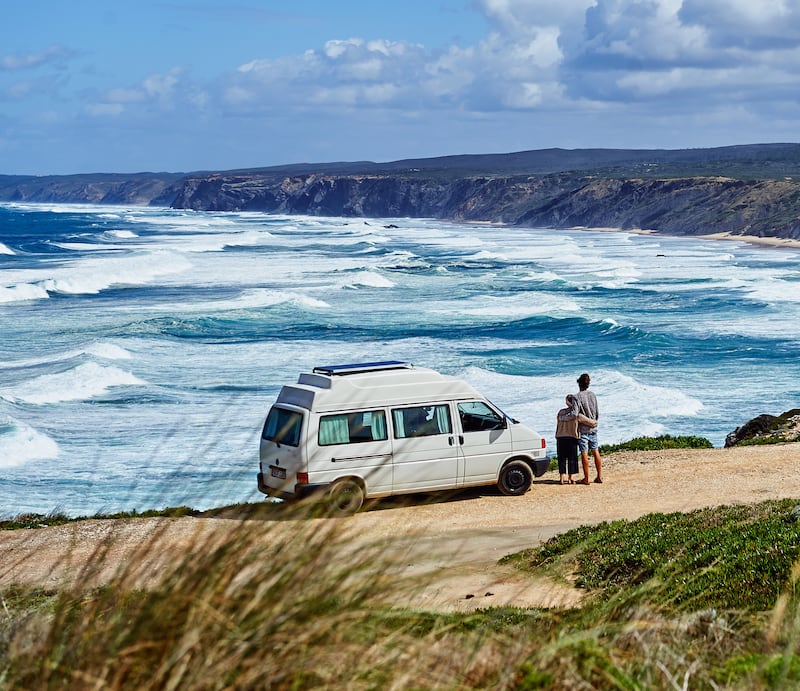

In North America in particular, but also in Germany and the UK, there is something Reddington terms the "vanlife movement" – people who eschew the downsides of contemporary urban living, with pressures on time and space (who wants to commit to 40-year mortgages?) in favour of a nomadic existence, living closer to nature and facilitated, somewhat ironically, by the technologies that help make the rejected lifestyle so unattractive.
For their book, the Canadian pair interviewed and photographed 46 individuals and couples, each making a reality of what many others fantasise about. All have left behind city or suburban life in preference for living simply and, it must be said in pretty confined spaces, at beauty spots close to water or in forests or places with epic, spectacular scenery.
Between them, they chose for their homes camper vans (or RVs – recreational vehicles – as Americans call them), converted Ford Transit vans, caravans and Airstreams, a canal boat and a yacht and, in a few cases, semi-permanent small wooden houses.
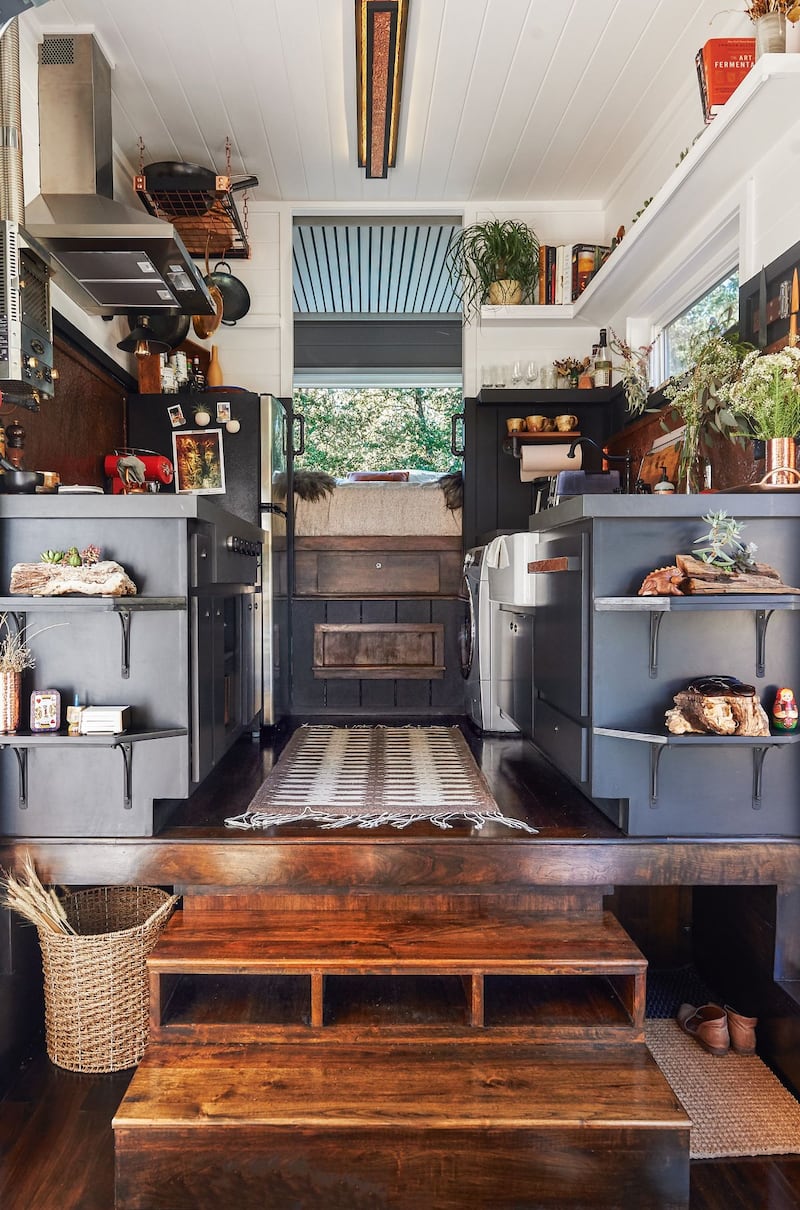
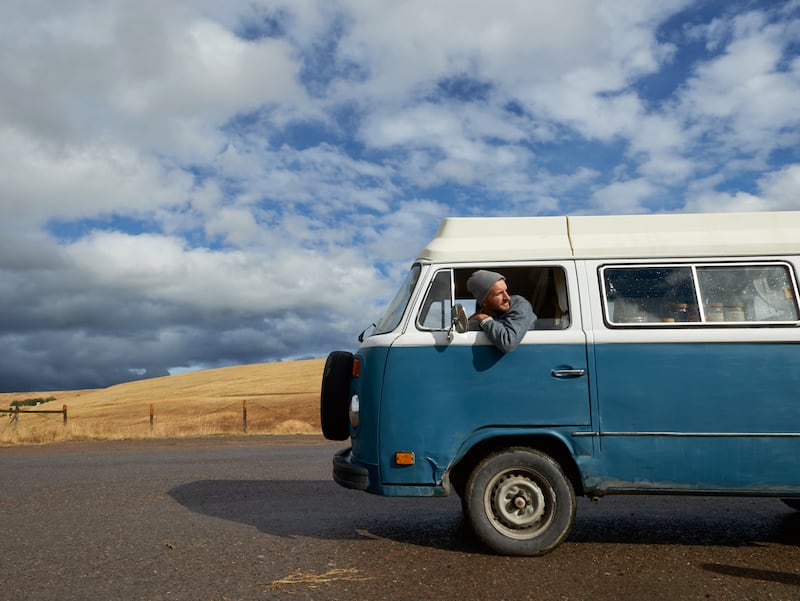
Katharina Körfgen, a geography graduate and web designer from Cologne with a passion for writing and surfing (she calls herself a surf gypsy), lives mostly in a VW T5 camper van in Portugal, a life choice her parents found unsettling.
"It's been hard to get them to let me go and live the way I want to live," she told Reddington, a former exhibition designer in Toronto and style director at House and Home magazine. "I don't want to work in an office every day and be in a normal house and just get stuck there."
Körfgen can be true to her motto – “Live offline, work online & do what you love!” – thanks to technology.
Michael Fuehrer, from Philadelphia, lives in a 2004 Thomas Freightliner former bus (think chunky, clunky bright-yellow US school buses that often end up as those madcap chicken buses in Central America). The interior of Fuehrer's bus, affectionately named Navi (bought for $3,600 – €3,260 – and upgraded into a home for about $30,000 more), is beautifully clad in pine and has all mod cons, including an oven large enough to accommodate a turkey.
Navi's inaugural trip was to Yellowstone National Park, which sits mainly in Wyoming, and from there to Glacier National Park, in Montana, and thence to Canada and Alaska, where Fuehrer spent 10 weeks.
"Since that first journey," writes Reddington, "he has meandered around the United States, picking up people – friends and strangers – along the way and dropping many at their destinations."
John Ellis, a web designer, and Laura Preston, a virtual personal assistant who also runs a quilt company, from Long Beach in California, live in a shiny, aluminium Airstream trailer with two dogs (Bulleit and Marlow) and a cat (Papa) and catalogued their escapades on thedemocratictravelers.com – the democratic bit being that readers and followers could suggest where they go next.
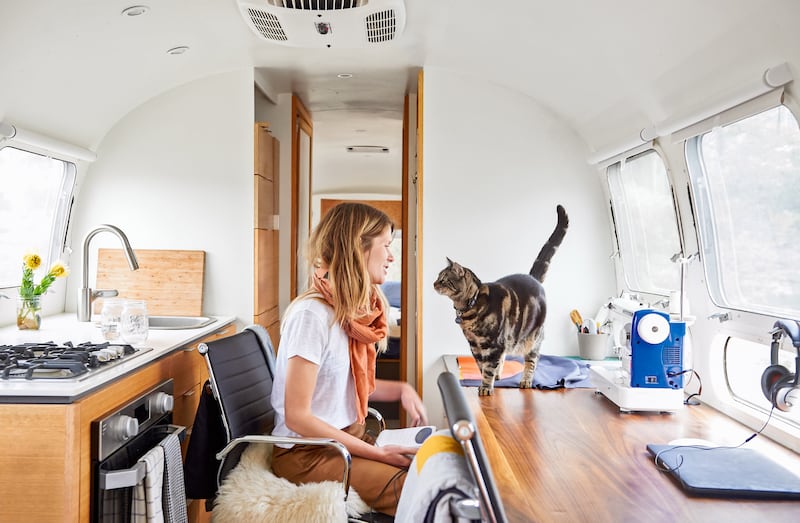
The pair are inspired by John Steinbeck’s example, chronicled in his road trip gem, Travels with Charlie – Charlie was his poodle – and, as Reddington puts it, want “to live out their days wandering the roads with their three pets”.
Reddington and Richards did a fair bit of wandering on their own for this book – nine road trips to six countries and 11 US states to find, interview and photograph people who come across not so much as running from something as embracing something else – a life less hectic, less cluttered and less destructively obsessed with online stuff (although very many of them have parallel quasi-conventional lives facilitated online).
The subtitle of Nomad is Designing a Home for Escape and Adventure, and Kit Whistler and JR Switchgrass, two Colorodans who live in a garish VW camper (hence the title of their book, Orange Is Optimism) have a simple enough aim: “just to be present in the company of nature”, as Reddington puts it.
“If we could all shake our addictions to owning stuff and defining ourselves only through our work,” says Whistler, “then we would be better, more well-rounded individuals.”
You don’t have to be like them, says Switchgrass. “It’s not about living in a van. It’s about changing your mind-set.”
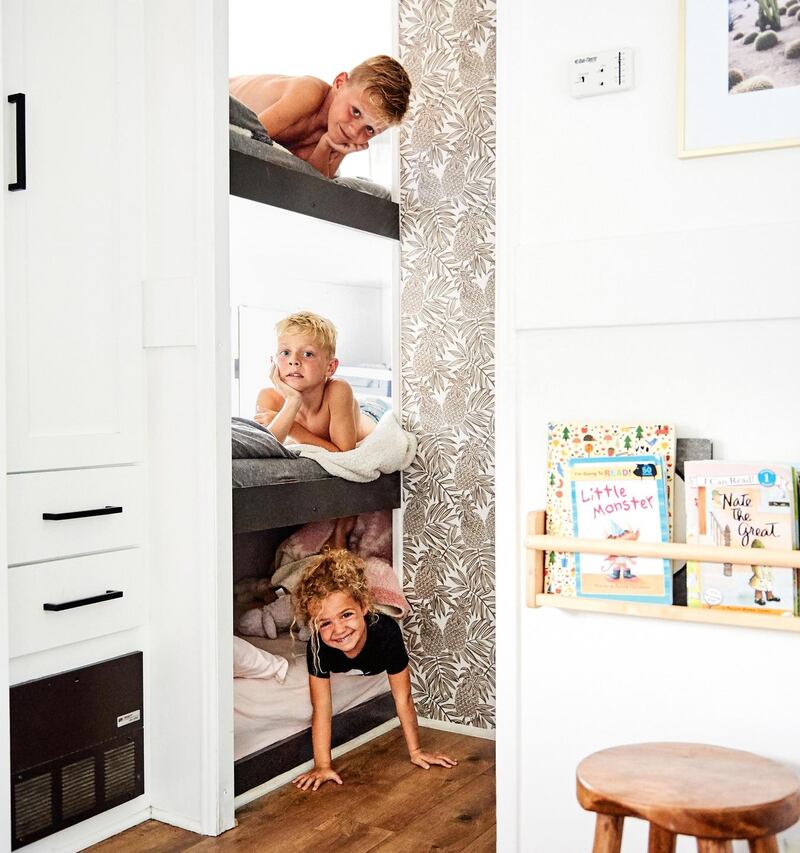
This is a book that will get you thinking. The photographs are a joy, with skilful attention to light and composition and pandering to a bit of the hippy in everyone. But there’s none of the music-festival mud and the sort of hippy-dippy, airhead “don’t bogart that joint, my friend” stuff of another era.
For all the apparent rejection of the way most people live, the nomads take huge pride in their little homes, filling them with trinkets and pretty things.
The final sections of this chunky 318-page volume are devoted to giving the aspirant nomad a wealth of practical advice and go-to websites that are wells of information on getting your dream home on wheels, renovating it and sorting out those really important matters like loos and showers.
Nomad, by Emma Reddington, with photographs by Sian Richards, is published by Artisan Books





















